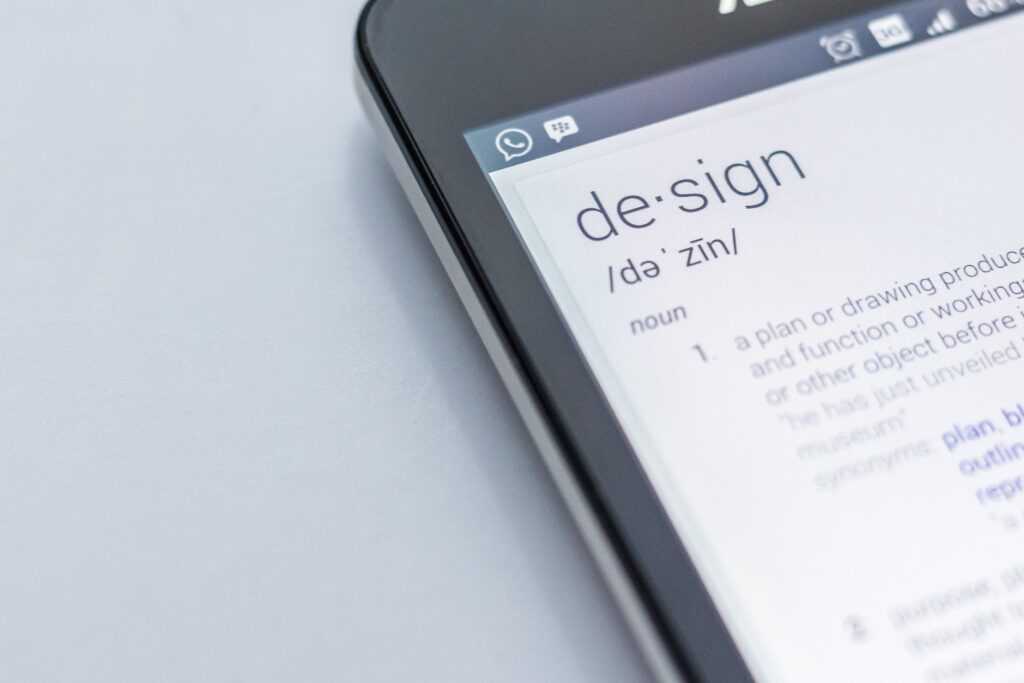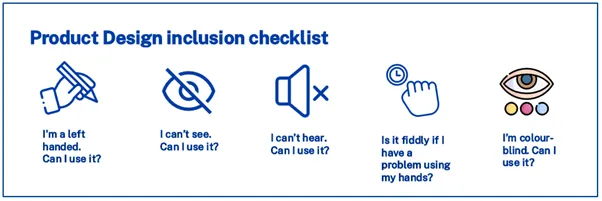In any business, a well-thought product design can be the difference between success and failure. If done right, it can influence a Profit and Loss statement and cut substantially operational costs. But did you know that a product design can make a real difference between inclusion and exclusion of minorities? So, when thinking of product design the question is: how well do you know your customers? The importance of quality and well-thought product design can make a real difference to the world as we know it.

Here are some numbers and facts to consider:
- Globally the number of people of all ages visually impaired is estimated to be 285 million, of whom 39 million are blind. People 50 years and older are 82% of all blind (https://www.who.int/blindness/publications/globaldata/en/#:~:text=Globally%20the%20number%20of%20people,blindness%20is%20cataract%20(51%25).);
- There are approximately 708 million left-handers in the world. In a recent statistical integration of 200 studies on left-handedness with an overall sample size of more than 2.3 million individuals, we found that the percentage of left-handedness is about 9.2 percent (Papadatou-Pastou et al., 2019);
- The global population aged 60 years or over numbered 962 million in 2017, more than twice as large as in 1980 when there were 382 million older persons worldwide. The number of older persons is expected to double again by 2050 when it is projected to reach nearly 2.1 billion (https://www.un.org/en/development/desa/population/publications/pdf/ageing/WPA2017_Highlights.pdf);
- There are 466 million people in the world with disabling hearing loss. This is over 5% of the world’s population; 34 million of these people are children. Unless action is taken, by 2030 there will be nearly 630 million people with disabling hearing loss. By 2050, the number could rise to over 900 million (www.who.int);
- Colour (color) blindness (color vision deficiency, or CVD) affects approximately 1 in 12 men (8%) and 1 in 200 women in the world (https://www.colourblindawareness.org/colour-blindness).
These are some of the facts that should be considered when you’re thinking of product design. How well do you know your customer? Is your product meant to be a global solution? Inclusive of all?
The truth is that, if you look at the products surrounding you in your day-to-day, you will notice that there are fundamental flaws in some of those products’ design. And not necessarily more expensive to fix but visible as excluding some of us. For example, I noticed this the other day when I was playing Uno cards with my daughter and she’s left-handed.
She couldn’t see her cards as a left-handed will naturally display the cards from right to left and the fact that the cards don’t have numbers/symbols in both top corners, immediately she was faced with a difficulty (illustration). Or another example where my mum, aged 83, requires one of us to help her dispense her daily pills from the packaging that it’s quite fiddling for someone with reduced hand mobility.
So either you have CEOs, CMOs, CFOs, or any decision-maker that have noticed these difficulties personally to be sensitive and fundamentally changes a business; or it becomes a marketing strategy to look good; or even if you think that you will grow older and will be faced with the same challenges to make a change, whatever is your motivation, the intent of this article is to bring awareness that inclusion can be done by rethinking your design thinking process.
Now, until worldwide these types of concerns are embraced naturally, organizations can go the extra mile to start creating inclusion seamlessly.
There are amazing tools and methodologies for product design to be more customer-centric. Design thinking provides great templates available online. Whatever is the one you use in your organization, I will challenge you to add this “Product design inclusion checklist” to it:

Now, this is a basic inclusion checklist. I am sure you can add more inclusion questions to this checklist, however, if you attempt to nail at least these, you are already making a significant change in how businesses impact inclusion through product design.
You can even put a gamified spin to it and connect this checklist to your product design team KPIs or performance metrics: The objective of the game is ZERO exclusion so attribute negative points if not inclusive and aim for ZERO. Simple and fun. Just aim for ZERO.
Here are some great inclusive product design ideas to get you inspired:
- Magnetic buttons in shirts https://magnaready.com/
- Colour coding for color-blind ideas https://www.color-blindness.com/2010/01/13/coloradd-a-color-coding-system/
- LEGO braille bricks: https://www.legobraillebricks.com/
- Sign language plug in: https://signly.co/
- Ambidextrous computer mouse
So next time you start thinking of your next big product idea, you should always ask how well you know your customers’ needs and use a more inclusive approach.
By the way, have you come across a great design concept that seamlessly was inclusive of minorities? If so, let us know in the comments!
Disclaimer: Apologies if some interpretations may offend a reader. I do rely on literal translation at times since English is a second language. My intention with this article is to spread awareness. I welcome your feedback to ensure I will not be constantly making the same errors in translation.
I also write about my own professional experience and learning curve. I am a continuous improvement learner so I welcome you to share extra information and spread awareness with me if you have other ways of analyzing the same issues or you have value-added information to the readers of this article. Thank you for reading.
Deixe um comentário